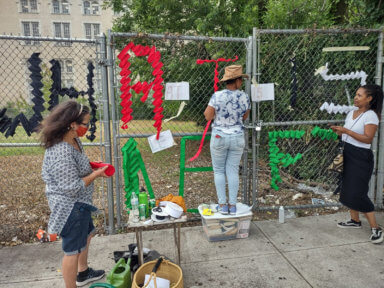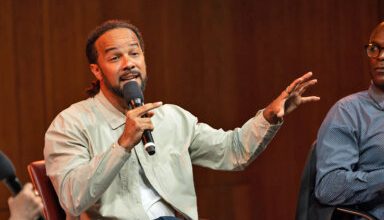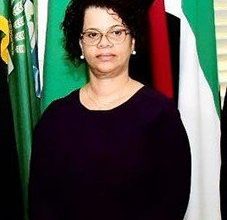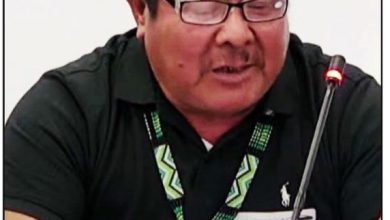Adams announces support for memorial at Flatbush African Burial Ground

As the Flatbush African Burial Ground Remembrance and Redevelopment Task Force (FABGRR) prepares to release a final vision document with recommendations for the site at the corner of Church and Bedford avenues in Brooklyn this fall, co-chair, Borough President Eric Adams, promptly released a letter to the city laying out his opposition to develop the site in Flatbush, Brooklyn that is known to be a burial ground for enslaved Africans, whose roles in the history of the borough and the city are still overlooked.
Along with Council Member Mathieu Eugene, FABGRR was convened in October 2020 to solicit public input from the community and other local stakeholders on the future of the site.
In a recent statement to the press, Adams who was elected, the next mayor of the city of New York at the recent Nov. 2, General Elections, in a letter to current Mayor, Bill de Blasio said that there is a pressing need for open space in the area, and encourages the city to transfer the lot from New York City Department of Housing Preservation of Development (HPD) or the New York City Department of Parks and Recreation (NYC Parks) to develop it into a memorial with accompanying open space, in order to preserve the unique and sacred heritage of the site.
“This year marks the 30th anniversary of the rediscovery of the African Burial Ground in downtown Manhattan, a somber occasion that should spark a larger conversation about our city’s history and what we owe to those who have passed. That debate has been renewed as we face a larger reckoning in our country over our enduring racial divide. As we continue the fight to preserve our history and recognize the significant role enslaved Africans played in shaping it, I cannot support developing this sacred site in Flatbush, an area with a rich history stretching back centuries,” said Mayor-elect Eric Adams.
“The residents of Flatbush and the members of the Task Force have expressed a clear preference for the site to be converted into a memorial with an open space. I recognize, and I am sympathetic to, the pressing need for affordable housing in the area. But I believe we can identify other sites in the area that can help us meet the need, while meeting an equally vital need for open space in a community that has long lacked access to such spaces.”
“I am committed to working with the city and community members to ensure this place becomes a site of learning and reflection on our past, to pave the way for a more just and equitable future. The work of the task force and the agencies involved cannot be understated, and I thank them all for their guidance during this process,” said Adams.
The task force conducted a series of meetings and robust public workshops in May and June of this year, before holding community report-back meetings in September. These efforts were intended to ensure the final recommendations for the Request for Proposal (RFP) reflected the needs and wishes of the community.
The Flatbush African Burial Ground site dates to 1651, when the area was first settled by the Dutch. Most families in the area owned at least one slave. In 1654, the still-extant Flatbush Reformed Church was founded. Enslaved people were not permitted to be buried on the church’s grounds when they died and so were buried on land the church owned at the time which is located at Church and Bedford avenues.
Historians believe that the burial ground was used for new burials from an indeterminate date in the 17th century through the early 1840s. Historical documents have confirmed the identities of two people buried at the site: a formerly enslaved woman named Phyllis Jacobs and a 110-year-old formerly enslaved woman named Eve.
In 2001, disarticulated fragments of human remains were uncovered during a planned renovation of the school that formerly occupied the site and were reburied at the Flatbush Reformed Church cemetery, according to the release.




